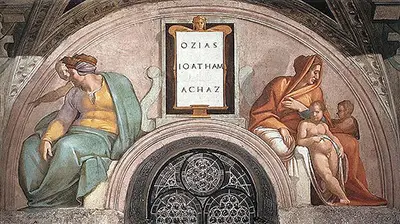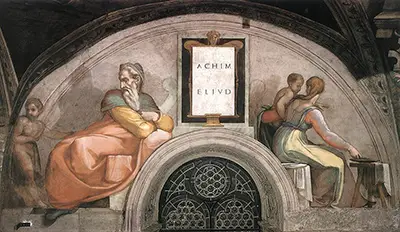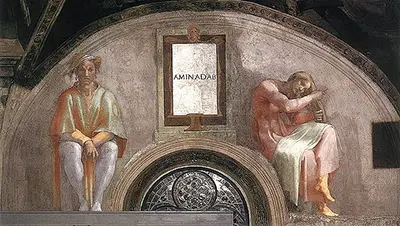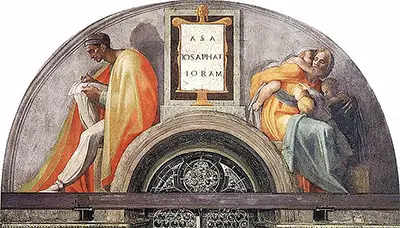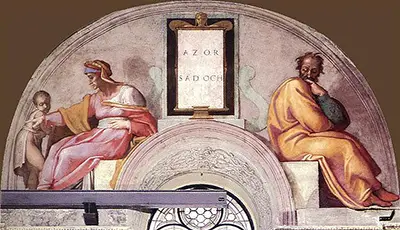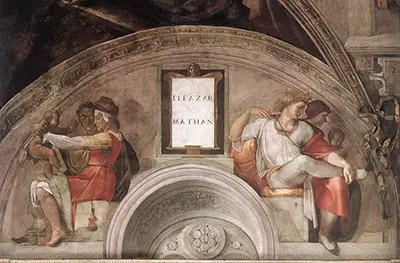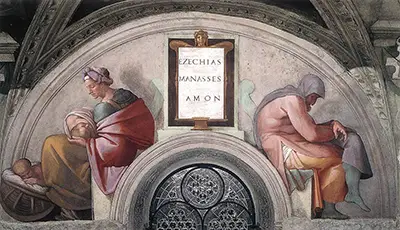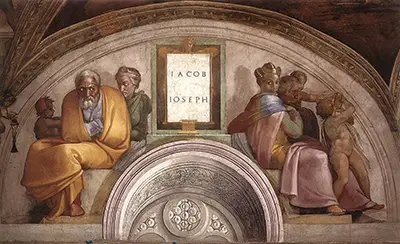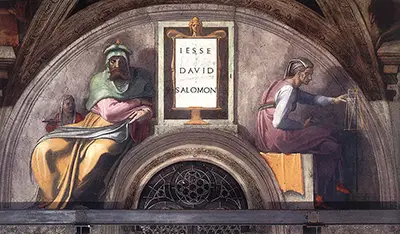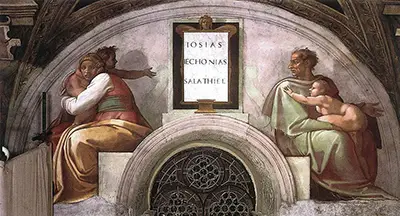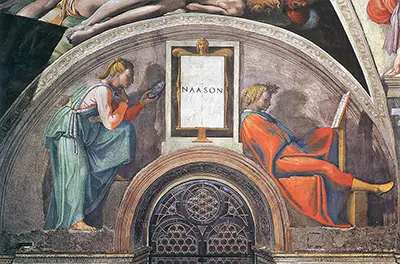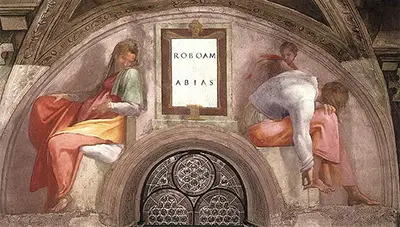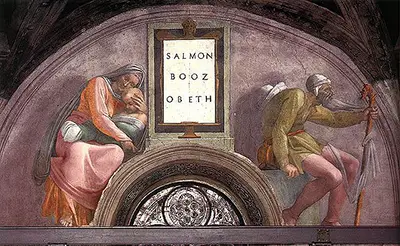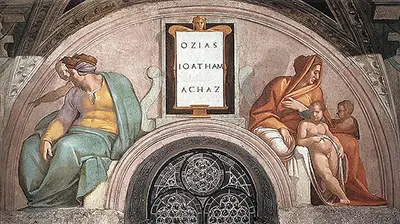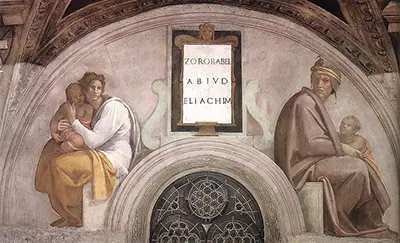The artist would draw inspiration from religious scripture throughout his career and whenever he produced art for religious institutions, the content would naturally follow that route. He found these patrons to be amongst the wealthiest and also helped to raise his profile considerably. Although he perhaps is better known as a sculptor, thanks to famous works such as David and Pieta, his breaktaking contribution to the Sistine Chapel ensures that his legacy as a painter will never be underestimated. This true Renaissance Man was also an accomplished draughtsman, and those abilities lie behind his paintings and sculptures within their early planning. Whilst being enormously talented, the amount of work which Michelangelo took on could never be accomplished by a single human being, and so, reluctantly, he was forced to make use of a number of assistants in order to complete these demanding projects.
There were fourteen paintings in total for the Ancestors of Christ, with each design being curved around a circular part of the architecture. Many installed frescos would have to be adapted in a similar way, where an artist would have to consider the architecture of his 'canvas' when planning the layout. There would be two rows of five of these items across the length of the Chapel, with then two more (Jacob / Joseph and Eleazar / Mathan) placed on the altar side. Michelangelo would also put in the extraordinary Last Judgement painting within this building as well, leaving behind one of the most incredible achievements of any artist in history. Today one will find it difficult to gain access to these artworks up close, and so some of the excellent publications around them are worth checking out. In terms of the ancestry of these particular paintings, they refer to the Gospel of Matthew, selecting men from the same family path as Joseph and Abraham.
Michelangelo's decision to give attention to the Genealogy of Jesus within these paintings have given historians much to ponder. These are not simply portraits, but there are also clear messages left within these lunettes, as the format is normally called. Many of the figures are angled away from each other, with Michelangelo producing a feeling of both connection and also separation. There are small families within each artwork, groups of four or five figures with the key names written into the painting with a marble effect which resembled sculptured detail. We do know that Michelangelo did not afford as much time to these lunettes as he did with other elements of his work in the Chapel, with some of the last ones actually being completed in just a matter of a few days. He therefore did not consider these paintings to be as important to the overall ceiling and wall design as others, but nonetheless, there is still much to admire and learn from them.
